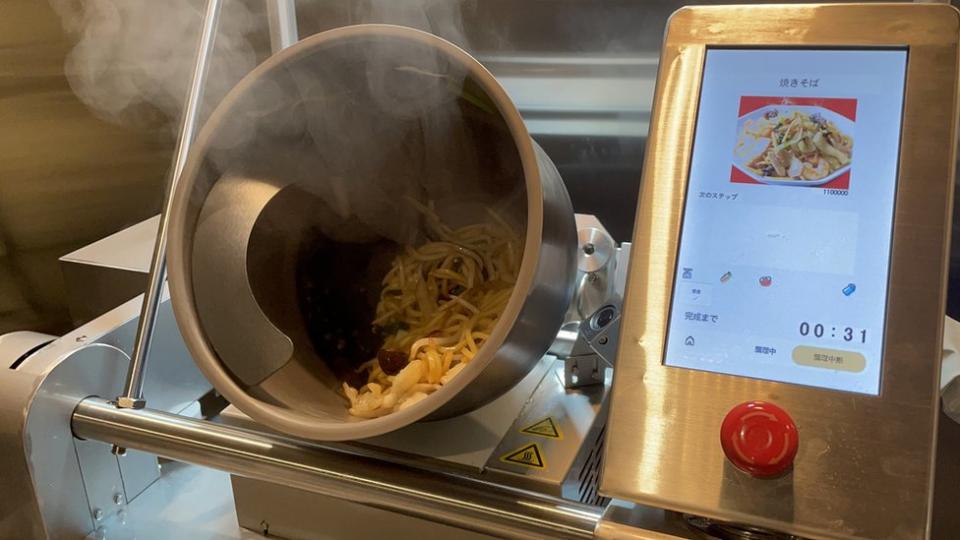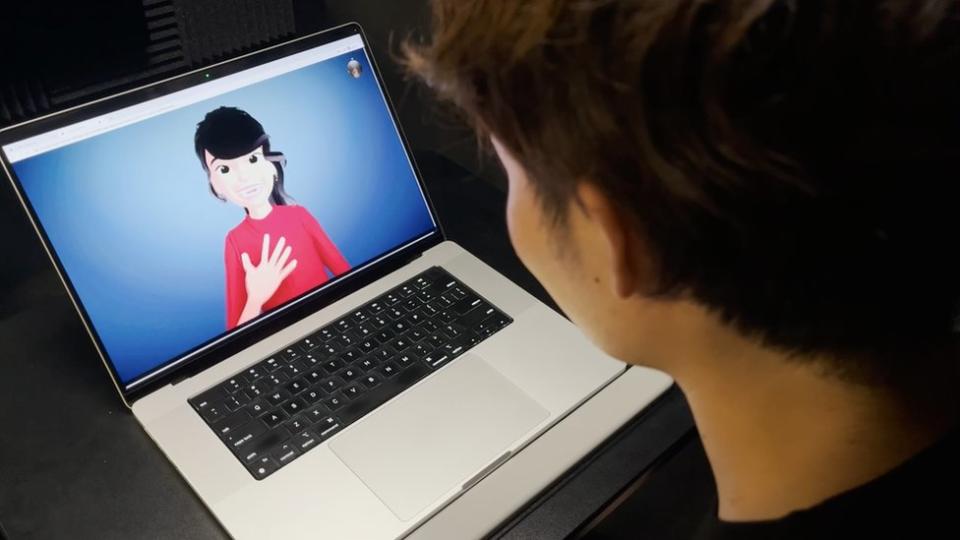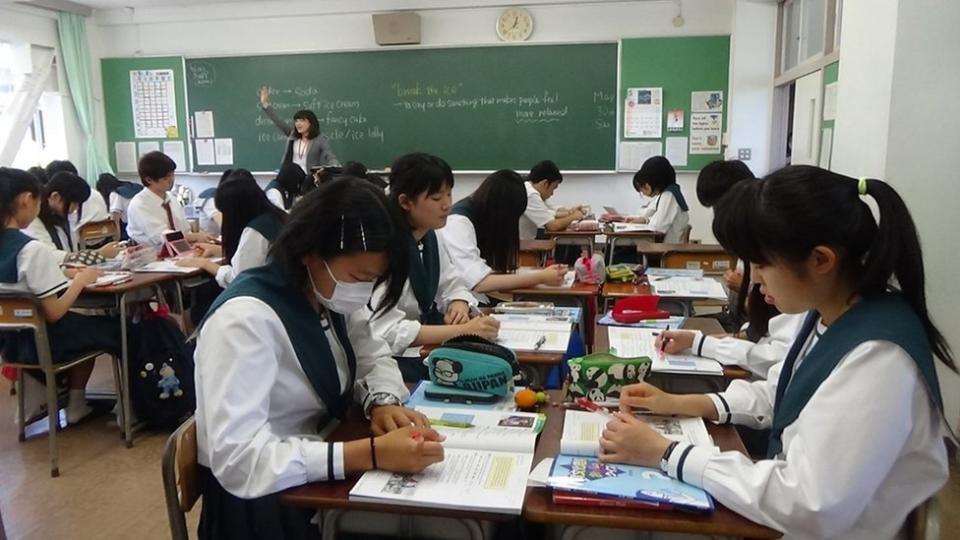A shrinking population means Japan has a labor shortage. Many hope that artificial intelligence (AI) can catch up.
In a country known to be obsessed with perfection, damaged or misshapen fruits and vegetables are difficult to sell.
And if you’re a specialty maker of Japanese dumplings, like the Osaka Ohsho brand, then selling a pack of gyoza with part of it damaged is a big no-no.
But when demand soared during the pandemic, parent company Eat&Holdings simply didn’t have enough manpower to check every dumpling or keep up with demand.
So it turned to technology for an answer. In January 2023, it opened a high-tech factory equipped with AI-powered cameras trained to detect defective gyoza on production lines.
Today, this facility makes two dumplings per second. That is twice the speed of Osaka Ohsho’s other production locations.
“By implementing AI, we have reduced manpower on the production line by almost 30%,” said spokeswoman Keiko Handa.
The company also recently launched an AI-powered cooking robot called I-Robo at one of its restaurants in Tokyo. Because it takes time to train chefs, the company says the technology will help solve the labor shortage.

Japan’s labor shortage is likely to get worse.
The current population of 124.35 million people has been declining for thirteen years. And Japan’s workforce is expected to continue shrinking by 12% between 2022 and 2040, by which time the country will be short an estimated 11 million workers.
Meanwhile, Asia’s second-largest economy is already home to the world’s oldest population, with 29% of people aged 65 or older.
The country also has one of the lowest birth rates in the world, with only 758,631 babies born last year. That is the smallest number since registration began in the 19th century.
The government’s efforts to increase the birth rate have had little success. In the words of Prime Minister Fumio Kishida, his country is “on the brink of no longer being able to function.”
Since AI has taken the world by storm, many have wondered if our jobs will be stolen. But for some in Japan, AI can’t come fast enough.
Agriculture is one of the country’s fastest aging industries, with the average age of a Japanese farmer now at 68.4 years. Here AI is used to identify different types of diseases, pests and weeds for early detection and prevention.
Nihon Nohyaku, a producer of agricultural chemicals, has developed a smartphone app called Nichino AI. When a farmer takes a photo of crops in trouble, the app diagnoses what is wrong and what pesticide may be needed.
“The accuracy rate is about 70 to 80%, so it is not as good as real experts, but better than ordinary farmers,” says Kentarou Taniguchi of Nihon Nohyaku.
“The longer we work on this app, the more we realize how excellent the human experts are,” he explains. “But the number of experts is declining, so that’s where AI tools can come in handy.”
Farmer Kensuke Takahashi, who has been using the app for three years, agrees that AI is one of the tools that will help modernize the industry. “The number of farmers is dropping sharply like a roller coaster,” he says, “but the total amount of Japanese products is increasing.”
Mr Takahashi acknowledges that there are older farmers who may be skeptical of new technologies such as AI, but he believes they help increase efficiency. “Once you try a drone to spray pesticides, you can’t go back to manual spraying,” he laughs.
What about a sector that has always faced a shortage: language teachers?
Despite the government’s repeated efforts to increase the number of English speakers, Japan consistently ranks low in English proficiency due to the lack of teachers who can speak the language effectively.
To address this shortage, a startup called Ecumenopolis has developed an AI-powered online tool that allows users to have English conversations with their avatar for 15 minutes per session. So far, it has been introduced in 50 schools across the country.


At Narita Kokusai High School, on the outskirts of Tokyo, students were asked to use it at home to practice for three months late last year.
“AI determines what kind of English conversations each student can have and varies the questions,” teacher Shoko Takiguchi told the BBC. “It’s difficult to have one-on-one conversations with every student, so that was an advantage.”
At the end of each conversation, students receive feedback in six areas, including pronunciation, grammar, fluency and vocabulary.
“With AI, it is easy to find out what my weaknesses were, so it was efficient,” said one of the students, Ko Hanyuan. But when asked if he would choose AI over his online tutorial, he says no. Why? It lacks the human touch.
Ms. Takiguchi agrees: “It’s helpful to improve your speaking skills, but I found conversations unnatural.” She adds that the AI cannot assess the user’s reaction, physical condition or change in tone.
So it won’t replace human teachers? “AI cannot and should not replace English lessons at school or teachers,” emphasizes school director Katsutoshi Fukumizu.


Governments in Japan are also experimenting with AI.
Facing a labor shortage, Yokosuka City in Kanagawa Prefecture has started using AI chatbot ChatGPT to help with administrative tasks such as transcribing and summarizing meetings.
“We are dealing with a huge amount of documents, and it takes a lot of time and effort to create those documents,” said city spokesman Kohei Ota.
Thanks to ChatGPT, “after our trial period, we calculated that we saved 22,700 hours of work annually,” he adds.
At the central government’s Digital Agency, which was established in 2021 to combat inefficiency in public administration, AI is also used to train staff.
“There are so many things we want to do, but our manpower has not been able to keep up,” said the agency’s Masanori Kusunoki. He adds that the government is trying to “explore how we can use AI and spread the information” to the private sector.
But Kusunoki doesn’t think the rise of AI will mean fewer workers are needed.
In a country where change is happening slowly, Japan is embracing the power of AI less reluctantly than other countries.
That’s because for more than a decade it has been exploring every possible solution to tackle the double whammy of an aging and shrinking population: from robots to women, the elderly and foreign workers.
While AI can help increase the efficiency of the workforce, it is far from ready to replace human workers.





